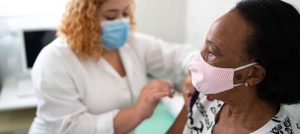Workplace violence is 'epidemic and a concern for healthcare'
Cleveland Clinic shares best practices as violence is four times more likely in a healthcare setting than in another industry.

As if the organizational, logistical and financial pressures caused by the COVID-19 pandemic weren't enough for the nation's hospitals to deal with, there's another potential threat to the healthcare workforce: the specter of workplace violence. And while workplace violence can occur in any organization in any industry, it's about four times more prevalent in healthcare than it is in other industries.
That's according to data compiled by the Cleveland Clinic, which partnered with HIMSS to host the Patient Experience Digital Series, including Tuesday's sessions on Workplace Violence 101 and The Power of Collaboration to Prevent Workplace Violence.
In 2017, Cleveland Clinic CEO Dr. Tomislav Mihaljevic charged the organization to be more aware of workplace violence and to begin fighting against it.
A couple of incidents that occurred in 2019 underscored the importance of addressing potential violence. A shooting at a North Carolina hospital injured an emergency room nurse and a security guard, while in Louisiana a nurse was attacked by a behavioral health patient waiting to undergo a medical exam. The nurse died in what was later ruled a homicide.
Janet Schuster, chief nursing officer at Cleveland Clinic Lutheran Hospital, said workplace violence can be defined as an act or threat of physical violence that occurs at the worksite, but can also be threatening or disruptive behavior, including verbal abuse. What makes it especially thorny in a healthcare setting is that it can come from someone outside of the organization who harbors criminal intent, someone within the organization who commits violence against a coworker, or someone with a relationship to a caregiver or team member.
"It is really, truly an epidemic and a concern for healthcare," Schuster said.
Primary care offices, home healthcare, medical offices, behavioral health settings and ERs are all at risk. About 40% of psychiatrists have reported physical assault, said Schuster, and among psychiatric aids the rate of violence is 69 times the national rate of violence in the workplace. Meanwhile, in the ER, one in three nurses have considered leaving the profession after being victimized by a patient.
"These victims report anger, helplessness, anxiousness, isolation and other symptoms," said Schuster. "The emotional trauma is significant."
THE APPROACH
At the Cleveland Clinic, the approach to addressing these problems starts with leadership. A central steering committee drives initiatives and supports local teams who are addressing the issue. Looking at data and staff education, team members provide annual reports on the data and share best practices that are occurring within the health system. This filters down into resources for employees that are available in print at their workstations or online in various training modules.
"We've given our caregivers a voice," said Bill Johansen, senior director of human resources at the Cleveland Clinic. "We support all of our caregivers, and we now expect them to report up and out on any of these events that may take place. Regardless of how benign or little it may seem to them, if it has an effect on them and the people around them we want them to speak up so we can act on that."
Basic safety measures can make a huge difference, such as scanning for weapons at the entrance, which has resulted in the confiscation of thousands of weapons, ranging from Tasers to mace, knives and guns. The Cleveland Clinic has also benefited from a 24/7 police presence in its ERs, a result of partnerships with local municipalities that supplement and support the health system's in-house police and security forces.
The system also requires caregivers in the ER and behavioral health units, as well as its security departments, to complete workplace violence training during their onboarding processes. And while they require extensive communication and planning, regularly held active shooter drills are also part of the mix.
Paul Kuzmickas, director of Cleveland Clinic's ombudsman office, said the system has created a separate reporting system for workplace violence events. The ombudsman then works with patients and caregivers after an encounter to de-escalate and diffuse the situation. All incidents are recorded, no matter how small or seemingly insignificant.
Barbara Morgan, associate chief nursing officer, emergency services at the Cleveland Clinic, said partnerships with local law enforcement has had a profound impact on the health system's ability to deal with incidents in an effective manner.
"It has a very strong impact on the occurrences and seriousness of incidents and inappropriate behaviors," said Morgan. "The presence and visibility of officers directly reduces, in fact discourages and prevents, these incidents. We all benefit from their presence."
Championing the caregiver experience
This special collection, which will be updated throughout the month, looks at what's being done to ease the burden on providers impacted by COVID-19.
Twitter: @JELagasse
Email the writer: jeff.lagasse@himssmedia.com












































